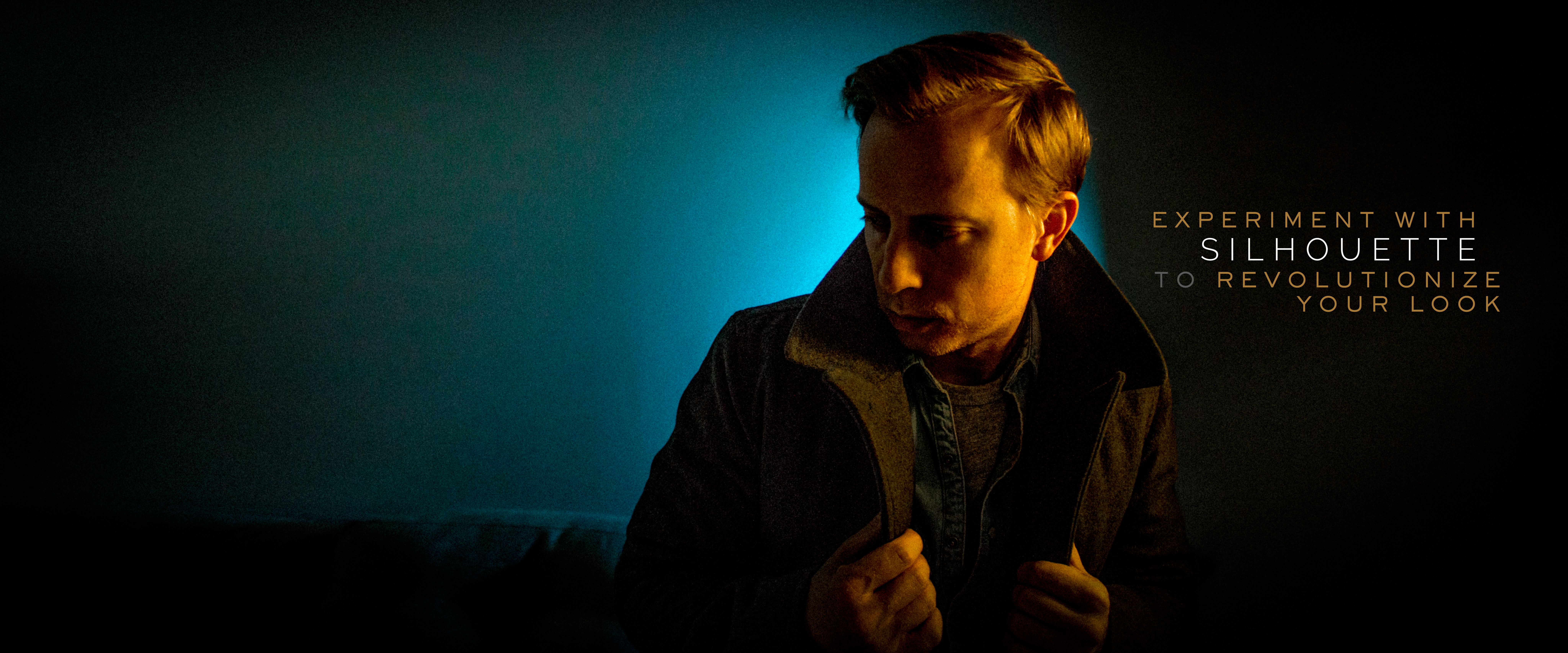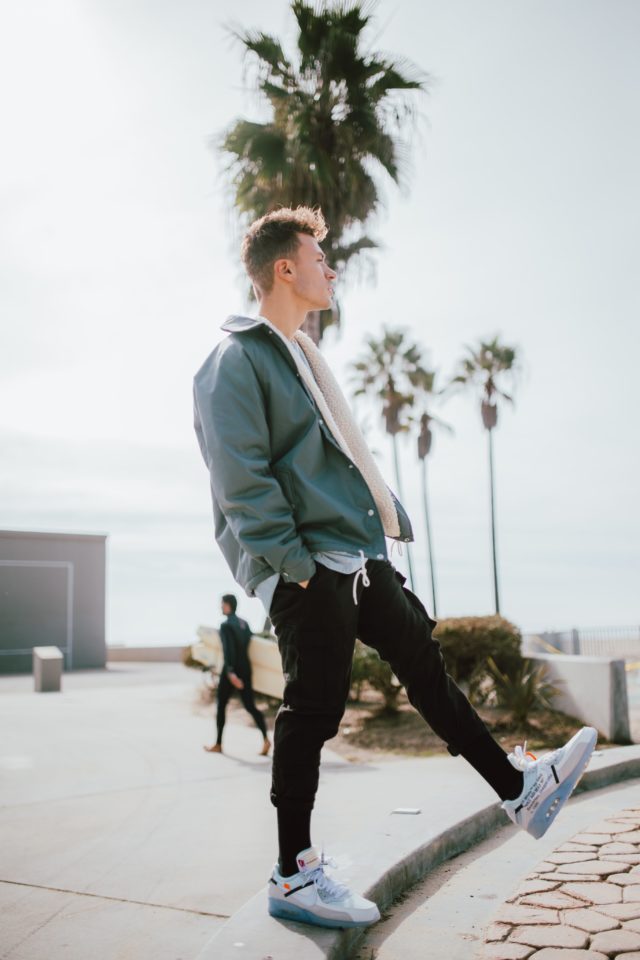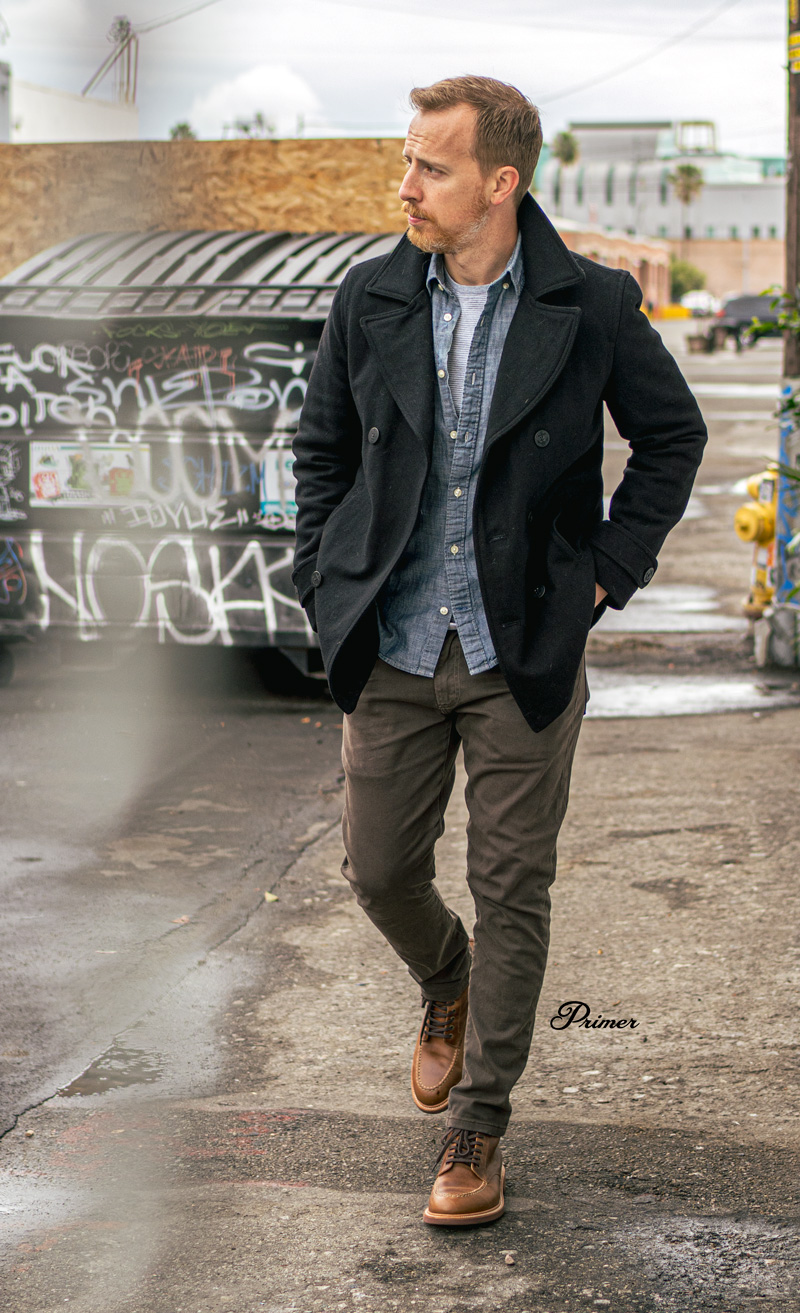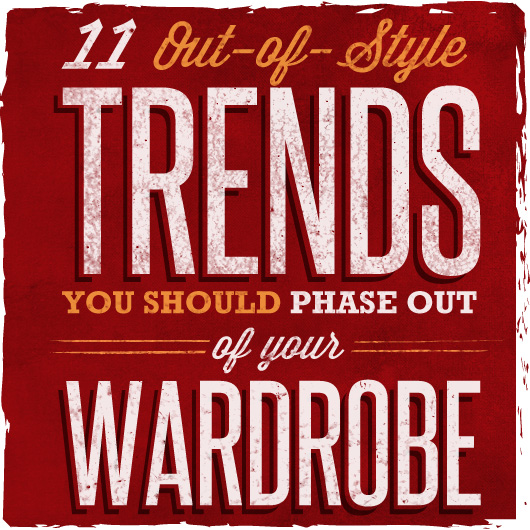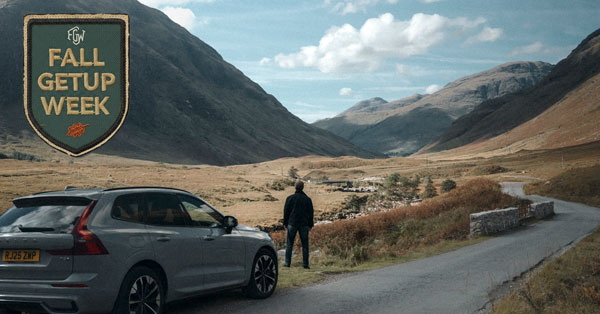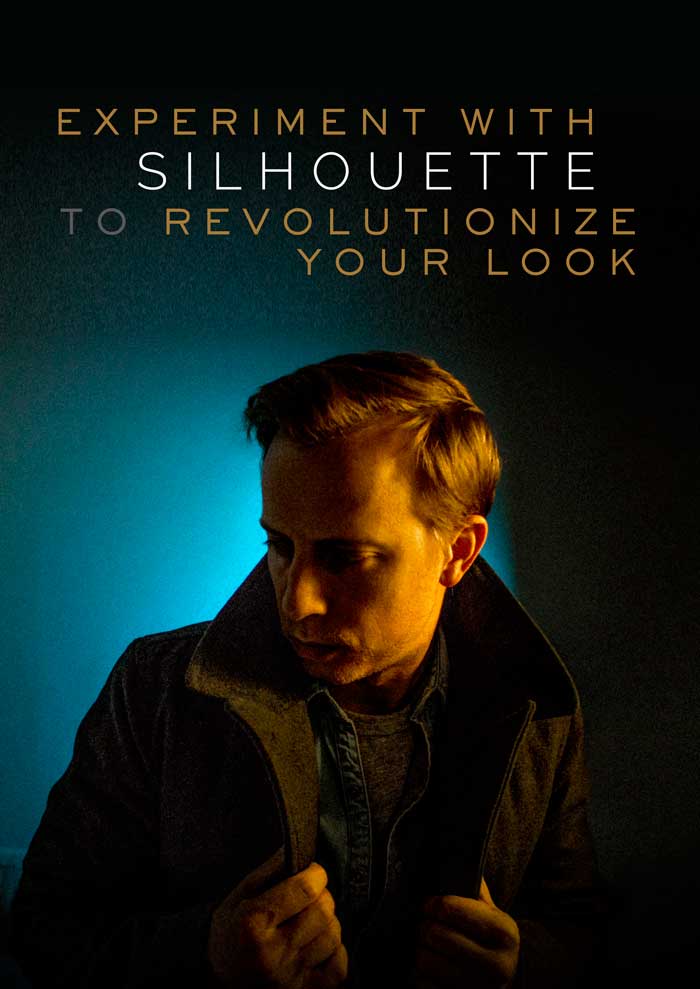
What’s the first thing you consider when putting together an outfit?
Is your decision guided by function (“What do I need leave my house?”), form (“What color/texture/detail will look best?”), or something else? Perhaps you dress according to mood or emotion (“I’m tired today…sweats it is!”)?
While form vs. function, texture, and color are all extremely important in piecing together an outfit, there’s one variable most guys ignore: silhouette.
So what is silhouette?
Silhouette is simply the general shape your clothes and body make when all detail is stripped away
Like the term silhouette implies, it’s the visual outline your sartorial choices make. Think about it: when seen from a distance, in poor lighting, or out of the corner of the eye, your silhouette is all someone else might see.
Most guys think of silhouette in terms of “this is too baggy” or “this is too loose,” but it also incorporates how your clothing hangs (or “drapes”), what parts of your body it accentuates, and how it performs when moving.
As a result, silhouette is perhaps one of the most important and most neglected aspects of style for men.
So what can you do to master silhouette and use it to your sartorial advantage? Let’s find out.
Silhouette vs Fit: What’s “In” vs. What’s “You.”
First, we need to make a distinction between silhouette and the concept of ‘fit.’
How a garment fits can be subjective, depending on the current trends and the self-confidence of the individual. Currently, a piece of apparel is deemed ‘well-fitting’ if it rides snugly on every arc and curve of the body. A t-shirt fits well if the arm holes clamp down on your biceps and the torso leaves little to the imagination.
Nothing’s wrong with that – in fact, that’s currently in style. But, it won’t always be.
On the runways of style houses like Lanvin, Dries Van Noten, and countless other high-fashion labels, we’re seeing a push for looser, drapier clothes. Sweaters are sagging, pants are billowing, and shoes are thickening.
You might scoff at what the models are wearing (and in some cases, rightfully so!) But here’s the thing: you’ll see a direct impact on the clothes in your local shop within the next 10 years, guaranteed.
The looser, drapier style won’t be as extreme as runway apparel, but pants with a roomier seat? Absolutely. They’re coming.
So how does this apply to silhouette? Simply this:
Fit is ephemeral. It shifts with the ever-changing definition of what’s “in.” Fit is a subjective, nebulous concept derived from the time period and a variety of social expectations. It's one of the reasons Primer provides so much information on fit – it can be tough to decipher.
Silhouette, on the other hand, is constant. It’s a property of how your clothes present on your body.
As a result, you can experiment with silhouette regardless of whether current trends call for fitted or looser clothing, and until you’ve hit on a look that complements your body and style in a way that makes you feel the best, and achieve something a bit more lasting than what’s hitting H&M next season.
How to Start Experimenting With Silhouette
As we’ve discussed, the outline of your clothes can have as much as an impact on how you’re perceived as the texture, color, and details.
For example, two items might fit great on their own, but together the silhouette could be off.
Personally, I have larger thighs, so my favorite trousers have more room in the seat with a nice taper to the ankle. A snug t-shirt might fit me well when the bottom half is ignored, but when placed together, the silhouette can appear imbalanced. A fitted cut on the biceps with a little more billow around the waist creates a nice transition point, placing less emphasis below the belt.
So how do you start putting more thought into how your clothes drape over your body, and how each garment interacts with one another to create the best silhouette?
Here’s the hard truth: It’s trial and error.
You have to experiment, and a great place to start is: contrasting silhouette.
1. Play With Contrast
One of the first things you learn when you start putting together outfits is that contrast looks good.
Color, texture, patterns, etc. – as long as there’s some degree of difference between two pieces, it’ll usually look nice. That’s one reason the navy blazer and khaki chinos are a staple in New England prep; there is a high level of contrast between deep blue and light tan.
If contrast is so important with texture and color, why shouldn't it also apply to silhouette?
The answer is: it does.
Playing with your silhouette doesn’t mean wearing 100% ill-fitting, baggy clothes. This is a common misconception.
To give an example, a fuller top and more fitted bottoms pair well together. You can accomplish this with slim-fit jeans and a loose-fitting sweater, hoodie, or jacket.
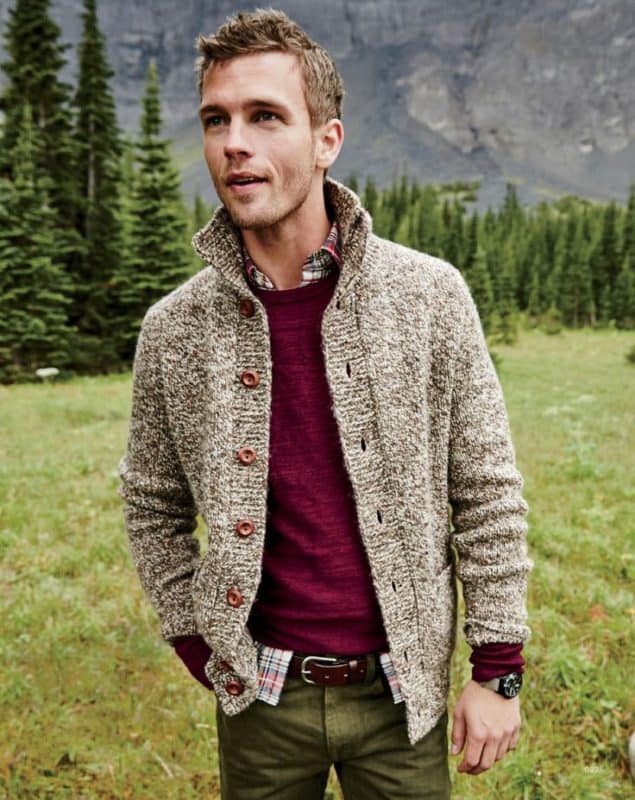
Sweaters are an easy option for experimenting with silhouette. Photo by J.Crew
The result is a full body taper that starts at the neck and gets narrower towards the feet. As long as the outfit you put together looks like it was done with intention, the contrast in size and shape can play to your advantage.
A classic example is how a suit jacket or blazer augments the silhouette of the shoulder, dramatically so with large shoulder pads, but even with a natural shoulder, the jacket enhances the width of the torso. The result is an elongation and flattering taper of the body. The outfit on the left has a cleaner, minimalistic silhouette without the jacket (which works because of the fitted sweater and pants); the addition of the jacket creates a more noticeable structure to the body. Neither one is better or more correct: both create different looks and have their roles.
There’s another benefit to playing with contrasting fit.
Say your body has odd proportions – for example, wider hips with a slimmer waist – your silhouette will reflect that if you wear only slim clothing. If, however, you keep the pants tapered and mostly slim and experiment with roomier tops, you’ll notice that the disparity isn’t quite as severe.
2. Play with Details & Accessories
You don’t have to spend a dime to start experimenting with silhouette. Take advantage of what your current closet already has to offer.
A peacoat with its collar flared has a distinctly different silhouette than when the collar is laid flat, and can really change the way an outfit looks.
Scarves can alter the neckline and add draped fabric to an otherwise monotone coat or sweater with little visual pop. The bulking of the neck area with collars on sweaters and coats has long been used as a way to add perceived width to the top of a man's silhouette.
Pants can even be tucked into boots, creating a retro, streamlined profile on your lower half (and what happens when you pair with a bulky sweater? Interesting silhouette!)
Once you start to think in terms of silhouette, and how you can break it up to add interest, the possibilities are truly endless.
Trends to Look Out For
There are a few trends coming down the fashion pipeline when it comes to silhouette. I mention them not as endorsements, but as things to be aware of and, if you like them, exploit for your own look.
First, you’ll likely see a sharp rise in the location of pants’ waists, inching closer and closer to the belly button. Trouser rise can have a noticeable impact on silhouette, and also allows for more interesting opportunities, like tucking in unusual tops.
Furthermore, you might see a deviation in break (the fold of the front of your pant fabric above the shoe). Some houses are moving towards showing the ankle, while others are leaning towards a full break with a crease or two. It’s a personal preference, but you’re likely to see the return of a fuller, heavier break.
Break The Rules to Make Your Rules
The point of experimenting with silhouette is to use it to enhance both your body and your outfit.
Remember that contrast looks good in almost any medium, as long as it is thoughtful and not randomly selected.
Keep your body type in mind, and use your silhouette to shape it in interesting ways. You can do a lot more with it than you’d imagine.
The one key thing to take away from all this is that you shouldn’t be afraid to experiment. There are a lot of fashion ‘rules’, and plenty of reasons to break them.
If you like the new silhouette you make by playing with contrast or accessories, you’ve just created the new look – for you. Try it out, tweak it, and enjoy the results.



